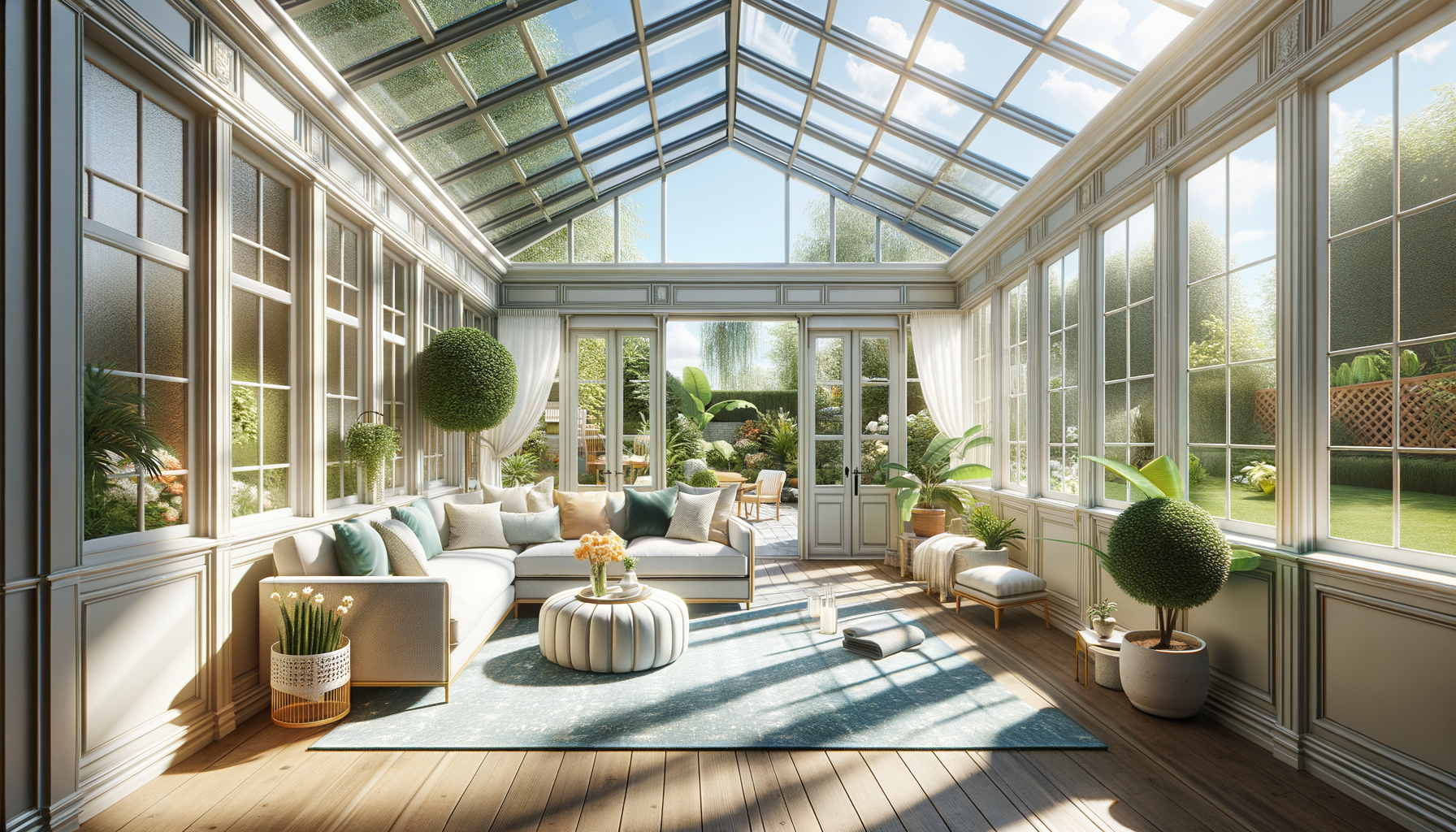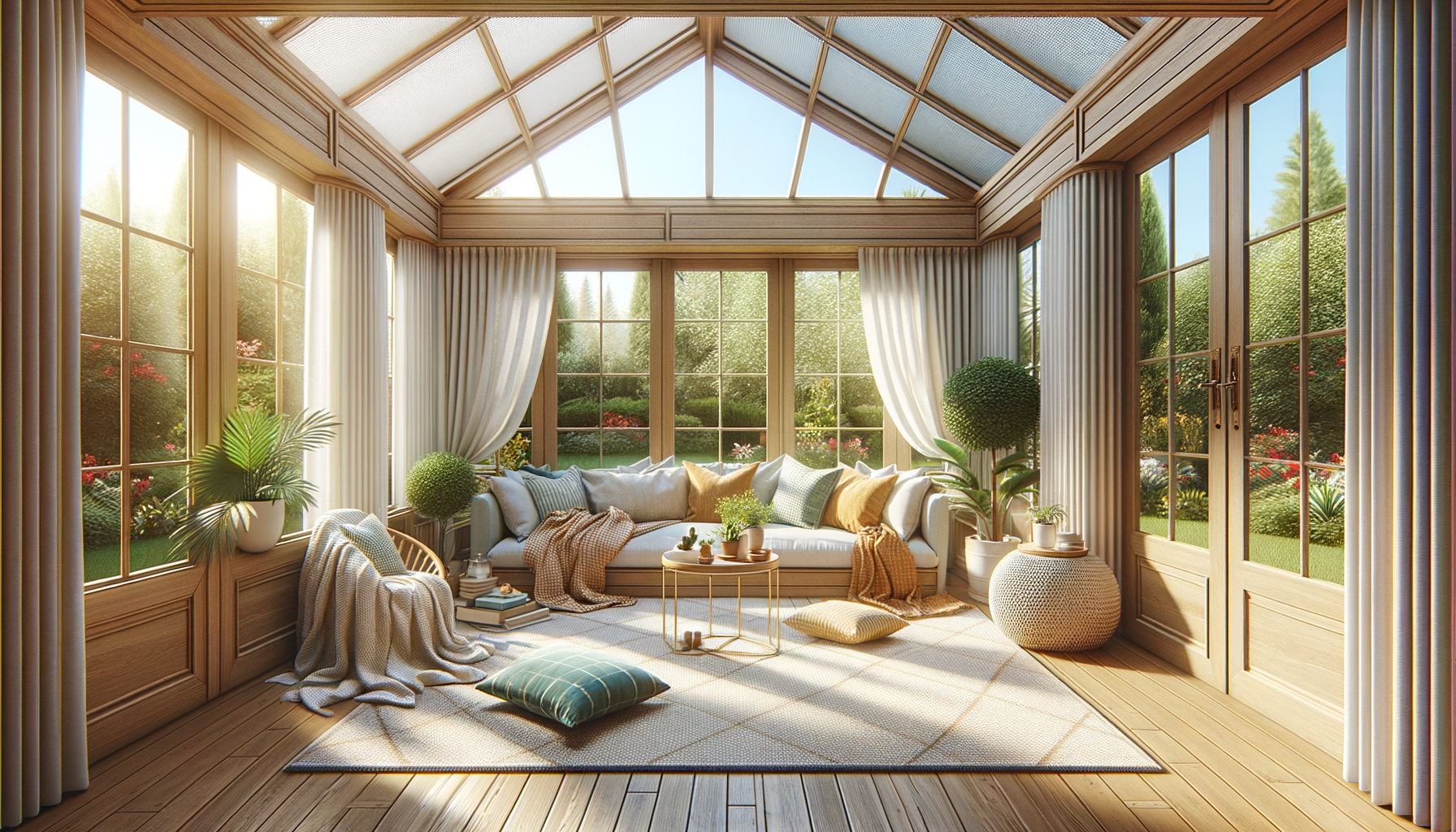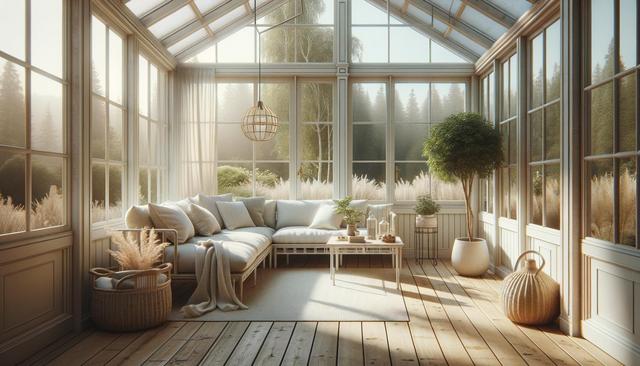Understanding the Concept of Sunrooms
Sunrooms, often referred to as solariums or conservatories, are spaces that blend the outdoors with the indoors, allowing natural light to flood in while providing a comfortable, sheltered environment. These rooms are typically constructed with large windows or glass walls that offer panoramic views of the surrounding landscape. The allure of a sunroom lies in its ability to provide a serene retreat where one can enjoy the changing seasons without stepping outside.
Historically, sunrooms have been associated with luxury, but their growing popularity has made them a feasible addition for many homeowners. They serve multiple purposes, from being a cozy reading nook to an elegant dining area, or even a vibrant indoor garden. The versatility of sunrooms makes them a valuable asset, adding both aesthetic appeal and functional space to a home.
In terms of design, sunrooms can be customized to fit various architectural styles. Whether your home is modern, rustic, or traditional, a sunroom can be tailored to complement its existing design. The choice of materials, from wood to aluminum, and the type of glazing used, such as double or triple-glazed glass, can influence the room’s energy efficiency and comfort levels.
Benefits of Adding a Sunroom
Adding a sunroom to your home offers numerous benefits that extend beyond mere aesthetics. Firstly, sunrooms enhance the natural light within a home, which can improve mood and reduce the need for artificial lighting, leading to energy savings. The influx of sunlight can also contribute to a warmer indoor climate during cooler months, potentially reducing heating costs.
Moreover, sunrooms increase the overall living space of a home, providing an additional area for relaxation, entertainment, or hobbies. This expansion can be particularly beneficial for families needing extra room without the hassle of a full-scale home extension. Additionally, a well-designed sunroom can increase the resale value of a property, making it an attractive feature for potential buyers.
Sunrooms also offer a unique connection to nature. The expansive glass walls allow for unobstructed views of the outdoors, creating a sense of openness and tranquility. This connection can be especially appreciated in urban settings where access to nature may be limited.
Cost-Effective Sunroom Ideas
While sunrooms are often seen as a luxury, there are several cost-effective ways to incorporate them into your home without breaking the bank. One approach is to repurpose existing spaces, such as a porch or patio, into a sunroom. This method can significantly reduce construction costs as it utilizes the existing foundation and structure.
Another budget-friendly option is to opt for prefabricated sunroom kits. These kits come with all the necessary materials and instructions for assembly, making them a convenient choice for DIY enthusiasts. They are available in various styles and sizes, allowing homeowners to select a design that fits their budget and space requirements.
Choosing energy-efficient materials can also lead to long-term savings. For instance, using double-glazed windows can help maintain a consistent indoor temperature, reducing heating and cooling expenses. Additionally, selecting sustainable materials, such as bamboo flooring or reclaimed wood, can further lower costs while being environmentally friendly.
Design Considerations for Sunrooms
When designing a sunroom, several factors need to be considered to ensure it meets your needs and enhances your home. The orientation of the sunroom is crucial; a south-facing sunroom will receive the most sunlight throughout the day, making it ideal for colder climates. Conversely, a north-facing sunroom may require additional heating solutions in cooler regions.
The choice of glazing is another important consideration. Double or triple-glazed windows provide better insulation, helping to maintain a comfortable temperature year-round. Additionally, the type of framing material, whether wood, aluminum, or PVC, can affect the sunroom’s durability and maintenance requirements.
Interior design elements, such as flooring and furniture, should also be chosen with care. Durable, weather-resistant materials are recommended, especially in areas prone to temperature fluctuations. Incorporating plants and natural elements can enhance the connection to the outdoors, creating a harmonious and inviting atmosphere.
Maintaining Your Sunroom
Regular maintenance is essential to keep your sunroom in top condition and ensure its longevity. Cleaning the glass panels is crucial to maintaining clear views and maximizing natural light. Using a mild detergent and soft cloth can prevent scratches and streaks, keeping the glass pristine.
Inspecting the structural components, such as the roof and frames, is also important. Look for signs of wear, such as cracks or leaks, and address them promptly to prevent further damage. Sealing any gaps or joints can improve insulation and energy efficiency.
In terms of interior maintenance, choosing easy-to-clean materials for flooring and furniture can simplify upkeep. Regularly dusting and vacuuming will help maintain a fresh and inviting space. Additionally, rotating plants and rearranging furniture periodically can breathe new life into the sunroom, keeping it a dynamic and enjoyable part of your home.




Leave a Reply